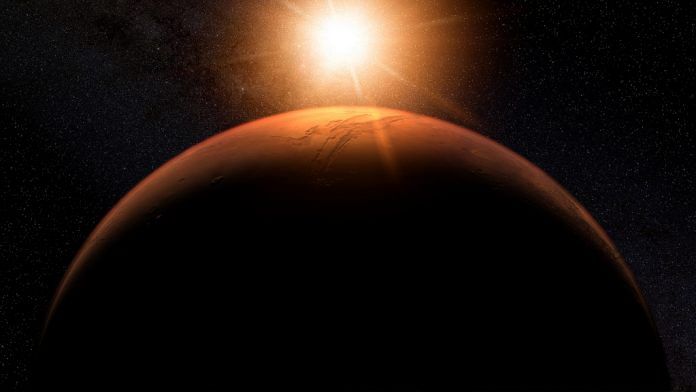New Delhi: Mars may have had rings billions of years ago, according to scientists at SETI Institute and Purdue University, who claim that this is the only explanation to the unusually tilted orbit of the red planet’s moon Deimos.
While some of the larger planets in the solar system have giant rings and numerous big moons, Mars only has two small moons, Phobos and Deimos, both of which have peculiar orbits. It was long believed that Mars’s moons must have formed at the same time as the red planet. However, the orbit of Deimos which is tilted by two degrees, suggests otherwise.
The team says that over billions of years, generations of Martian moons were destroyed into rings. Each time, the ring would give rise to a new moon, and this cycle kept repeating.
Mars’ inner moon, Phobos, is losing height as its tiny gravity is interacting with the looming Martian globe. Phobos’ orbit will eventually drop too low and be pulled apart to make a ring around the planet. More on CNN.
Carbon emissions may wipe out mangroves by 2050
Mangroves will likely drown by 2050 due to rising sea levels if global carbon emissions are not reduced, a new study suggests. The team from Nanyang Technological University in Singapore looked at sedimentary data from when the Earth underwent a warming spell that melted glaciers up to 10,000 years ago.
The team estimated the probability of mangroves surviving under two climate scenarios — low and high carbon emissions.
If high emissions continue, the sea levels will likely rise more than 6 mm per year. Under this scenario, there is a 90 per cent probability that by 2050, mangroves will not be able to grow at a pace fast enough to survive the sea levels.
Under a low emissions scenario, sea levels will rise less than 5 mm per year, giving mangroves enough time to grow vertically and survive. More on NY Post.
Magnetic field of sun’s corona mapped in detail
Scientists have mapped the shape of the magnetic field of the solar corona, the sun’s outer atmosphere, with higher spatial resolution and over a larger area than ever before.
The corona extends for kilometres into space and is easily visible during an eclipse, when the moon blocks the sun’s bright light.
For the study, published in the Astrophysical Journal, researchers used images of the corona taken during 14 eclipses from the past two decades. The research helped track the changes in the sun’s corona over two 11-year magnetic cycles.
Unlike the Earth’s magnetic field, which has a fixed north and south pole, the sun’s magnetic field swaps poles around 11 years, making up a magnetic cycle. More on Tech Explorist.
Fossil of 110-million-year-old dinosaur reveals its last meal
Scientists have discovered the fossilised remains of the stomach contents of an armoured dinosaur that possibly met an untimely death while eating its last meal 110 million years ago.
The fossil of the dinosaur, called Borealopelta markmitchelli, was so well preserved that scientists were able to identify the traces of the cellular structure of the leaves and intact spores.
Such direct evidence of an ancient, extinct animal being a herbivore is rare. Usually, scientists use indirect data from the teeth and jaws of fossils to understand the diet of prehistoric creatures. More on Reuters.






